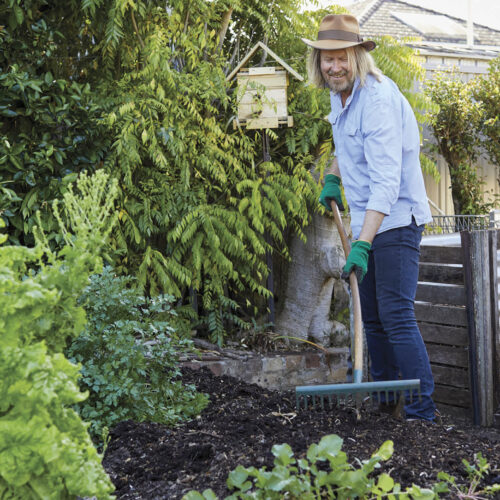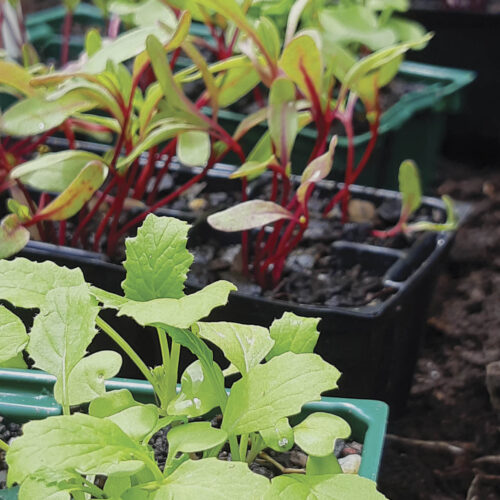How to make a worm farm
2022-04-18T02:07:51+10:00
You can use a bath, trough, sink or even a large tin to make a worm farm, says Penny Woodward
Earthworms do wonders for your soil. They burrow through the soil eating pieces of leaves and other organic matter and once inside the worms’ gut, tiny bacteria break down the plant material into a form that plants can use. Their droppings (known as worm castings) enrich the soil. Worms also open up the soil, bringing air into it, which is essential for small animals and plants living in the soil. If you have earthworms, you have healthy soil and the more you have the healthier it is. Using mulches like lucerne hay also promote worm activity because they feed protozoa which are one of the worms favourite foods.
Compost and worm farm worms are different from those normally found in the soil. They are introduced worms (not Australian natives) the most common being red worms Eisenia andrei and tiger worms E. fetida. They won’t survive in normal soil because there are not enough nutrients to keep them going. Worms found in our soil are mostly Australian natives although there are other introduced worms as well. There are more than 1000 species of Australian native worms found in our soils which can range in size from a few millimetres to the Gippsland Giant Megascolides australis which can reach 3m!
Worm farms
You can make your own worm farm or there are lots of different worm farms for sale, but in all of them you feed the worms on kitchen waste, shredded paper, straw and leaves. They then produce worm castings which are full of nutrients. The worm farm also produces a liquid or leachate, this can also be full of nutrients but it depends very much on what has gone into the worm farm as to how useful the leachate is.
To build your own worm farm you will need
1. Something that provides a container, such as a bathtub (preferably an old one!), an old trough, kitchen sink or even a large tin, a wooden box, or even bricks and planks that can be made into a box and lined with plastic. The container should be at least 30 cm deep.
2. A position where it doesn’t get too hot in summer.?
3. Garden soil?
4. Food such as grass clippings, garden clippings, kitchen waste, leaves, manure, coffee grounds, tea leaves, straw and shredded paper. Worms like their food in small pieces, so it’s best to chop up whatever you are putting in. But if you are patient and have plenty of space, then just leave them whole. Orange and lemon peel, garlic and onions, are not worms’ favourite food, but but even these they will eventually eat, just don’t give them too much all at once.?
5. Worms. Get some from your own compost, a friend or neighbour, a plant nursery or buy them them online.
6. A damp cover for the worms. Hessian bag or thick wad of newspaper, shredded office paper (see photo) or an old woollen jumper, cotton shirt or PJ bottoms to place over the surface. Wet well before placing on top. As long as its made from natural fibre the worms will happily devour it over time at which point you can replace it. This layer is essential to keeping the worms and scraps moist but not too wet, while also excluding light.?
7. A removable impermeable cover. This needs to be placed over the farm to stop heavy rain from flooding the worms or sun from drying them out.
8. If you have a trough, bath or sink to use, you might want to create a timber frame to hold the container above the ground (see photo) so that you can catch the leachate in a bucket. But they can just sit on the soil and the leachate will slowly make its way into the soil below.
9. Once you have constructed the worm farm, then put it into position and spread about 5 cm of moistened soil, compost or coir over the bottom of the container, add about 5 cm of food.
10. Water the whole thing but only until it is moist, not really wet. Add a handful of worms and cover with the damp newspaper, hessian, jumper, shirt etc. Then place the removable cover over the top.
Check the bin at least once a week and add food, also water if the farm looks like it might be drying out. Every few weeks scrape the worms and worm castings down to one end of the worm farm and put fresh soil and food up the other end. After a few days all the worms will move into the fresh food and you can remove the worm castings easily without taking any worms out.
The worm castings are spread over the soil and add a whole range of useful nutrients. But cover them with mulch or you will loose the micro-organisms that don’t like being exposed to light. They are really good for pot plants, especially if you are growing herbs and vegies in pots. The worm leachate that collects in or drains out the bottom of the farm is usually diluted with about five times as much water and can be watered over any plant but I generally water it around my fruit trees.
Have fun, worms are so important in our gardens and its great having your own worm farm. Just think, hundreds of new pets!






